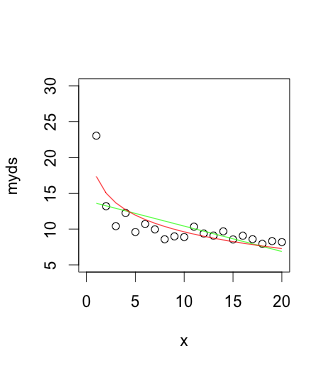I've checked everywhere, and people refer to examples that I can't understand (yes I'm kinda slow). Could anyone please explain me how to build a logarithmic trendline in R?
Here's the working example:
myds <- c(23.0415,13.1965,10.4110,12.2560,9.5910,10.7160,9.9665,8.5845,8.9855,8.8920,10.3425,9.3820,9.0860,9.6870,8.5635,9.0755,8.5960,7.9485,8.3235,8.1910)
plot(myds)
I can't find a simple way to apply regression trendlines. I'm interested in particular in the logarithmic and the linear trendlines. Is it possible to do without connecting any new packages?
Good sirs, please be kind to clarify!

